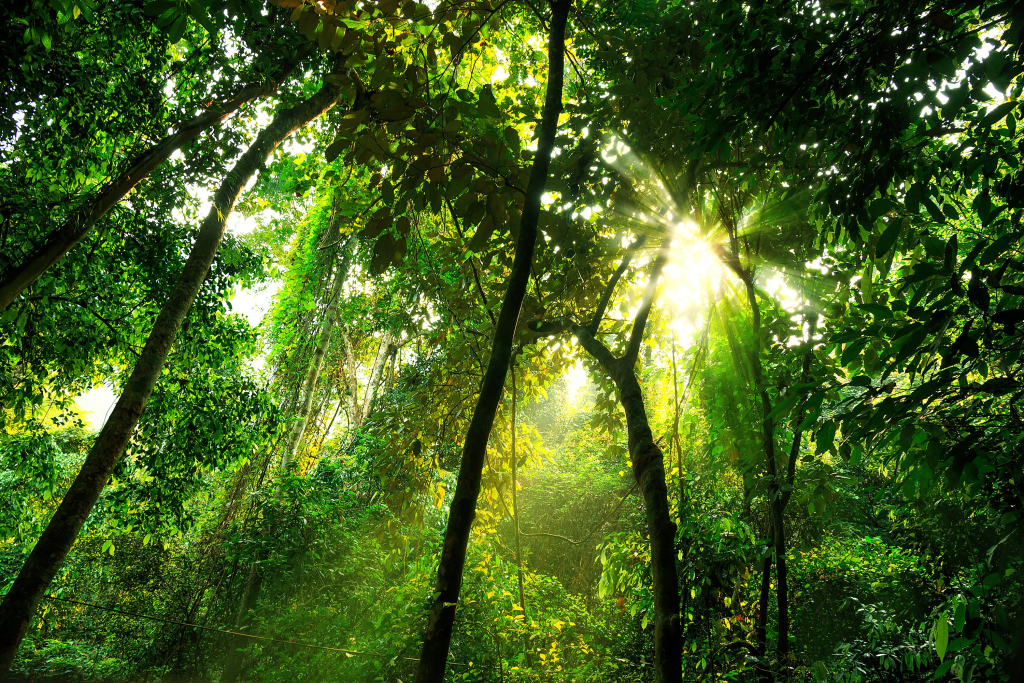
The impact of climate change on Harvard Forest has become a growing concern among researchers and ecologists. Located in Petersham, Massachusetts, this expansive 4,000-acre forest serves as a critical laboratory for understanding how warming winters and shifting weather patterns are altering forest ecology. Senior ecologist David Orwig observes that the forest is changing rapidly, with once-dominant hemlocks now declining under the pressure of invasive species like the woolly adelgid. These changes are not just theoretical; they manifest in tangible ways, as the forest’s understory becomes more exposed and a new generation of black birch trees takes root. The ongoing research at Harvard Forest reveals a complex interaction between climate change and ecological diversity, underscoring the urgency to monitor and adapt to these environmental shifts.
The repercussions of global warming on Harvard Forest illustrate a pressing ecological dilemma that researchers like David Orwig are actively studying. As this vital woodland undergoes significant transformations, the changing climate affects everything from tree species distribution to soil composition and the overall health of forest ecosystems. Observatories within Harvard Forest highlight the unsettling realities of shorter winters, increased presence of invasive pests, and the gradual emergence of previously uncharacteristic flora. With the interplay of ecological balance in flux, these developments raise important questions about the future of such landscapes. Understanding these dynamics is crucial, not only for scientists but for future generations that will inherit these ecosystems.
The Role of Harvard Forest in Climate Change Research
Harvard Forest stands out as a vital research hub where scientists monitor the effects of climate change on forest ecosystems. Particularly notable is the extent of data collected over decades, which provides invaluable insight into how shifting climatic conditions, such as warmer winters and increased precipitation, affect forest ecology. This research facility not only serves as a laboratory for empirical observations but also cultivates a commitment to understanding the implications of these changes within the ecological community.
With ongoing projects that test hypotheses related to forest responses, researchers at Harvard Forest utilize innovative techniques to investigate changes in tree species composition, soil health, and biodiversity. The richness of historical data allows scientists to identify long-term ecological trends, facilitating a deeper understanding of how climate change, driven by global warming, is altering the very fabric of forest life. By analyzing gas exchanges, monitoring invasive species, and measuring soil properties, Harvard Forest emerges as a key player in the scientific dialogue surrounding climate adaptation and resilience.
Frequently Asked Questions
How is climate change impacting the forest ecology at Harvard Forest?
Climate change is significantly altering forest ecology at Harvard Forest, characterized by warming winters and increased rainfall variability. Data indicates that temperature and precipitation patterns are shifting, leading to changes in species composition and ecosystem dynamics. For instance, black birch is replacing declining hemlocks due to the effects of climate change and invasive species like the woolly adelgid.
What specific changes are being observed in Harvard Forest due to climate change?
Researchers at Harvard Forest are observing numerous changes due to climate change. Winters have become milder and shorter, resulting in a thinner snowpack that affects soil moisture and temperature regulation. Additionally, invasive species, such as the woolly adelgid, are thriving in warmer conditions, accelerating the decline of hemlock trees and altering the forest’s structure and composition.
In what ways are warming winters affecting biodiversity in Harvard Forest?
Warming winters at Harvard Forest are affecting biodiversity by modifying habitat suitability for various species. The milder winters allow invasive species like the woolly adelgid to thrive, leading to significant declines in hemlock populations. Consequently, the biodiversity of the forest is changing as species that depend on healthy hemlock forests face new challenges and competitors.
What role do invasive species play in the climate change impact on Harvard Forest?
Invasive species exacerbate the impact of climate change at Harvard Forest by outcompeting native flora, such as hemlocks, which are declining due to pests like the woolly adelgid. These invasive pests thrive in warmer temperatures and contribute to structural changes in the forest, which in turn affects nutrient cycling and forest resilience.
How do climate change trends observed at Harvard Forest contribute to our understanding of global climate patterns?
The long-term climate change trends observed at Harvard Forest provide critical data that align with global climate models. With historical records of temperature and precipitation dating back to the 1960s, researchers can identify patterns such as increasing temperatures and variable precipitation, which are indicative of broader climate trends impacting ecosystems worldwide.
What experiments are being conducted at Harvard Forest to study climate change effects?
Harvard Forest hosts various experiments designed to understand climate change effects on forest ecology. These include artificial soil heating to study ant and microbial community responses, as well as monitoring gas exchange using instruments placed high in the canopy. Such research helps assess the ramifications of warming temperatures and changing precipitation on ecosystem health.
How does the decline of hemlocks affect climate change resilience at Harvard Forest?
The decline of hemlocks at Harvard Forest reduces the forest’s climate change resilience as these trees play a vital role in maintaining ecological balance. Hemlocks help regulate temperature and soil moisture while providing habitat for sensitive species. Their replacement by deciduous trees like black birches alters nutrient dynamics and microenvironments, potentially affecting the forest’s ability to adapt to ongoing climate changes.
What observations have researchers made about snowpack changes at Harvard Forest?
Researchers at Harvard Forest have observed declining snowpack levels and shorter durations of snow cover as a direct result of climate change. This trend impacts soil moisture, stream habitats, and species that rely on consistent winter snow for their lifecycles, indicating significant ecological shifts within the forest ecosystem.
How do researchers at Harvard Forest study the interaction between climate change and forest ecosystems?
Researchers at Harvard Forest employ a multifaceted approach to study the interactions between climate change and forest ecosystems. This includes long-term ecological monitoring, experimental studies assessing species responses to temperature and moisture changes, and data collection on invasive species patterns to observe how these factors influence forest dynamics and biodiversity.
What can we learn about the future of forests from the climate change impacts observed at Harvard Forest?
The climate change impacts observed at Harvard Forest serve as a critical case study for understanding potential future scenarios in forest ecology. As species compositions shift, invasive species proliferate, and climate variability increases, these observations highlight the urgency of adaptive management and conservation strategies needed to preserve forest ecosystems amidst accelerating climate change.
| Aspect | Key Points |
|---|---|
| Climate Change Effects | Harvard Forest is experiencing changes due to warming winters, leading to the growth of black birch and the decline of hemlocks. |
| Research Significance | Harvard Forest hosts around 100 ongoing research projects that provide long-term climate data and trends. |
| Data Collection | Temperature and precipitation data has been collected since the 1960s, enabling researchers to observe climate trends. |
| Ecosystem Changes | Loss of hemlocks alters the forest ecosystem, affecting soil chemistry, nutrient flow, and forest dynamics. |
| Community Response | The local community expresses deep concern and emotional connection to the changing landscape, viewing it as ‘a labor of love.’ |
| Personal Experiences | Researchers share personal anecdotes reflecting shifting baselines in climate experiences that affect future generations. |
Summary
The Climate Change Impact on Harvard Forest is profound, as researchers continuously observe dramatic transformations within the forest’s ecosystem. The warming climate has notably led to the decline of hemlock trees, replaced by more resilient black birch, altering the soil chemistry and nutrient flow crucial to forest health. With a dedicated team documenting changes since the 1900s, Harvard Forest serves as a critical laboratory for understanding climate dynamics. Such long-term ecological studies not only contribute to scientific knowledge but also highlight the passion and emotional connection the community shares with this unique landscape. As climate change accelerates, the implications on biodiversity and future forest conditions raise significant concerns, emphasizing the need for continued research and conservation efforts.


